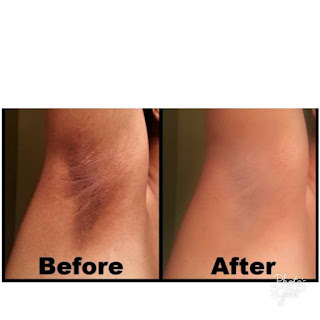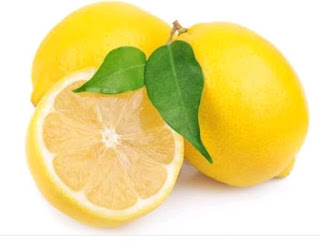How To Make homemade organic raw apple cider vinegar
Like smoothies, lemonades and few pantry staples, turns out the best apple cider vinegar is homemade! This amber liquid gold is so tasty that every now and then I find myself having a tablespoon of it, on its own. Yeah, a tablespoon of vinegar, go figure.
I can’t say that I was not happy with my previous ACV. It was raw, unfiltered and quite tasty, in a mouth puckering sort of way. Available just across the street and at a relatively affordable price. You’d think I can’t ask more from a vinegar. Yet here I am telling you that there is BETTER. Much much better. And if you were using a refined, distilled, heated, filtered apple cider vinegar, brace yourself for some pretty amazing new flavours!
Best news that comes with this recipe? Kitchen skills play absolutely no part. It’s a fool proof waiting game that anyone can play.
Making your own ACV is a dead easy affair to tackle and hilariously inexpensive to boot. It might just be the easiest recipe ever shared on TalesofaKitchen. And the most useful at a world wide level – no matter the season, no matter the country or the continent, I know there must be some cheap, organic, local apples you can get your hands on. And a knife, surely you have one you can dust off. And then just empty a big ol’ jar, clean it really well and brace yourself with some patience. These babies need to ferment for quite a while to give us a whole lotta bacterial goodness.
The recipe I used calls for whole apples. Anything you can find, really. But you’d be happy to know you can make ACV using just scraps like the cores and peels. Yep, you can eat your apple and ferment it too. So if there’s any apple pies baking in your near future, make sure you keep those scraps and put them to good use.
Also good to know is that the fermentation process depends on season – less during summer, bit longer during colder months. You will know your vinegar is ready when you will notice a dark, cloudy bacterial foam – this is called the Mother and can easily be noticed when holding the vinegar to light. This is bacteria we love and cherish! Because it’s full of enzymes and minerals that over-processed vinegars do not have.
Homemade organic raw apple cider vinegar
Prep time: 5
Total time: 2-3 months
Ingredients
- 3 small apples (core and peel included, no stem)
- 3 tsp raw sugar (I used muscavado)
- filtered water to cover – I used about 800ml, you might need to use more or less depending on what jar/container you use, it’s shape and how the chopped apples sit in it; the most important thing is to add just enough water to cover the apples and ensure they are submerged.
Instructions
- Wash and chop your apples into medium sized pieces (or use the peels and cores of 6-7 small apples after making a pie). Place them in a clean, rinsed and sterilized wide mouth jar.
- Mix the sugar with 1 cup of water and pour on top of the apples.
- Add more water if needed to cover the apples.
- Cover the jar with a paper towel or a cheesecloth and secure it with a band. This keeps nasties away while letting the liquid breathe.
- Place the jar in a warm, dark place for 2-3 weeks – I just kept it in my pantry.
- Strain out the liquid and discard the apple pieces.
- Return the liquid to the same jar and cover it again (same paper or cheesecloth).
- Return the jar to the same warm, dark place and leave it do its thing for roughly 4 to 6 weeks, stirring with a plastic or wooden spoon every few days or so. I’ll be honest with you, I wasn’t that organised with my stirring (oftentimes forgot), but my vinegar still loved me.
- After the first 4 weeks, you can begin to also taste your vinegar and once it reaches an acidity you like, you can actually transfer it to a bottle with a lid and begin using it.
- When you clean and sterilize your jar, please make sure you rinse the jar well to avoid having residue soaps or anything. This can spoil your brew.
- If your apples tend to float to the surface in the initial few days and you are not using a special fermentation jar with an insert to keep foods below water level, you can improvise as in the photo above. I tend to ferment in a big glass jug these days as it’s the only large recipient with a wide enough mouth that I own. I have a jar that is roughly the size of the jug’s mouth and I use that to keep the apples submerged. The jar needs to be sterilized prior to use and if it has small indentations on the bottom that you cannot thoroughly clean (as mine did), I prefer to pop it into a bpa free plastic zip lock bag. I then cover the entire set up with cheesecloth and secure it with a band. You can also use a small plate if it fits or a cup – anything you can thoroughly clean and sterilize that will keep the apples submerged.
- Organic vs non -organic. If using organic apples, you can use the whole lot – core, peel, everything, as long as there’s no rotten bits. If using conventional apples, I would discard the peel as that retains a lot of pesticides.
- Bubbles mark the start of the fermentation process.
- The white scum that forms on top of your ferment is good. It is a natural outcome of the fermentation and it is what forms the mother in few weeks time.
- Any other scum of any other color (green, blue, grey, black) is not good. I would personally discard it and feed the apples to my compost. When bad mold is on any type of food, it’s good to know that it is not located only where you can see it with the naked eye. It has the ‘magical’ power of spreading very well and fast and infesting it all. Safe is to discard, learn from your mistakes and try again with a new batch. If you are a beginner, start with a very small batch so not to be sorry if something goes wrong.
- I use a stainless steel sieve to strain the apples and it is in contact with the ferment for very brief time. I did not find it affects the fermentation process at all. However, for the stirring that we need to do more often, I would recommend a plastic, wooden or ceramic spoon.
- Types of sugar. If you want to start a mother from scratch, meaning you’re making this recipe for example, best to use a raw sugar. There were questions about honey – it works, but not as well I find – process is slower and the end vinegar not as strong. If you have 1/2 cup leftover vinegar from your first batch or a mother and can add that to a second batch of vinegar, you can use honey to ferment. It will do the job. However, I find best to alternate feeding the mother with raw sugar as well – it likes it more than honey. Best to do one batch sugar, one batch honey, one batch sugar again etc. , that’s if you want to use honey as well.














Comments
Post a Comment